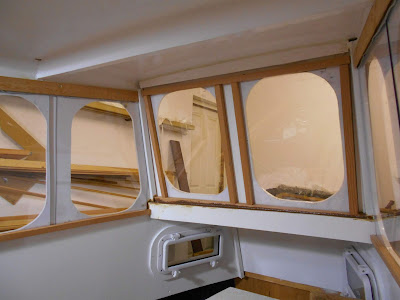To remind you, I write as if the reader is a novice; if you're not, then you may be amused by my take on all things to do with anchors.
My first instinct was to buy a cheap anchor and tie it to the boat with a long piece of rope. When the time came, just throw the anchor over the side ... job done! My conscience got in the way and I did some research; after coming all this way why not do anchoring professionally. I discovered a whole new art form.
I learnt that there are lots of types and sizes of anchor so which one would suit me best. The rule-of-thumb for getting the right weight of anchor is:
One pound for each foot of the boat's length, or, one Kg for each metre.
So I needed a 15 pound (7.5 kg) anchor. There are many types of anchor and the one best suited for me was a Bruce. These came out of the need to hold oil-rigs in place and have been developed for the likes of me.
You can get really expensive shiny Stainless Steel ones but I settled for a galvanised steel one. Mine comes with 5 metres of chain and 50 meters of rope.
Rather than go through the theory of the system I intend to simply show what I do and explain at each stage. That way we slowly build up the system.
STAGE 1 The Chain Locker
With all that chain and rope I needed a chain locker. I went right forward into the wheel house and cut a hole in the forward bulkhead.
Using folded paper to get the shape I made a plywood floor inside the locker; fixing it in place with epoxy fillets
I bought a hatch door for the locker for £25 (US$ 33) this saved the time needed to make one and also matched the two ports already in that location
The hole I had was too large for the hatch: I had to make it large to get the floor into the locker. The result was when the door was offered up there were gaps in places
To overcome this I cut out an annulus from 3/8" plywood
The annulus was placed around the spigot of the hatch and offered-up
It all fitted very nicely. The hatch was removed and the annulus glued with epoxy resin and clamped in place to cure. That is the current situation.
 |
| Note Rope Inside the Locker |
Tomorrow I fit the hatch in place and move onto the next stage





































